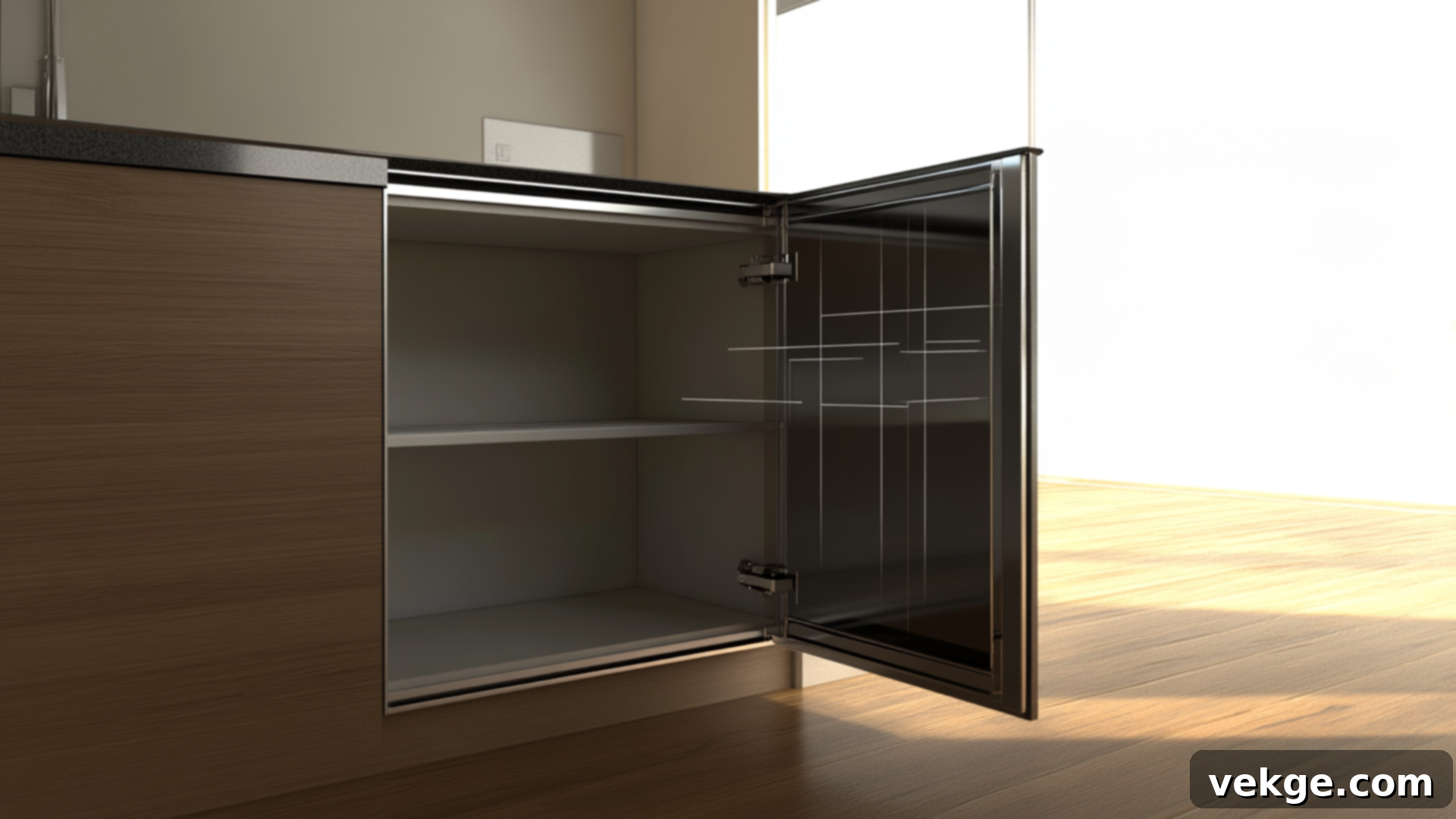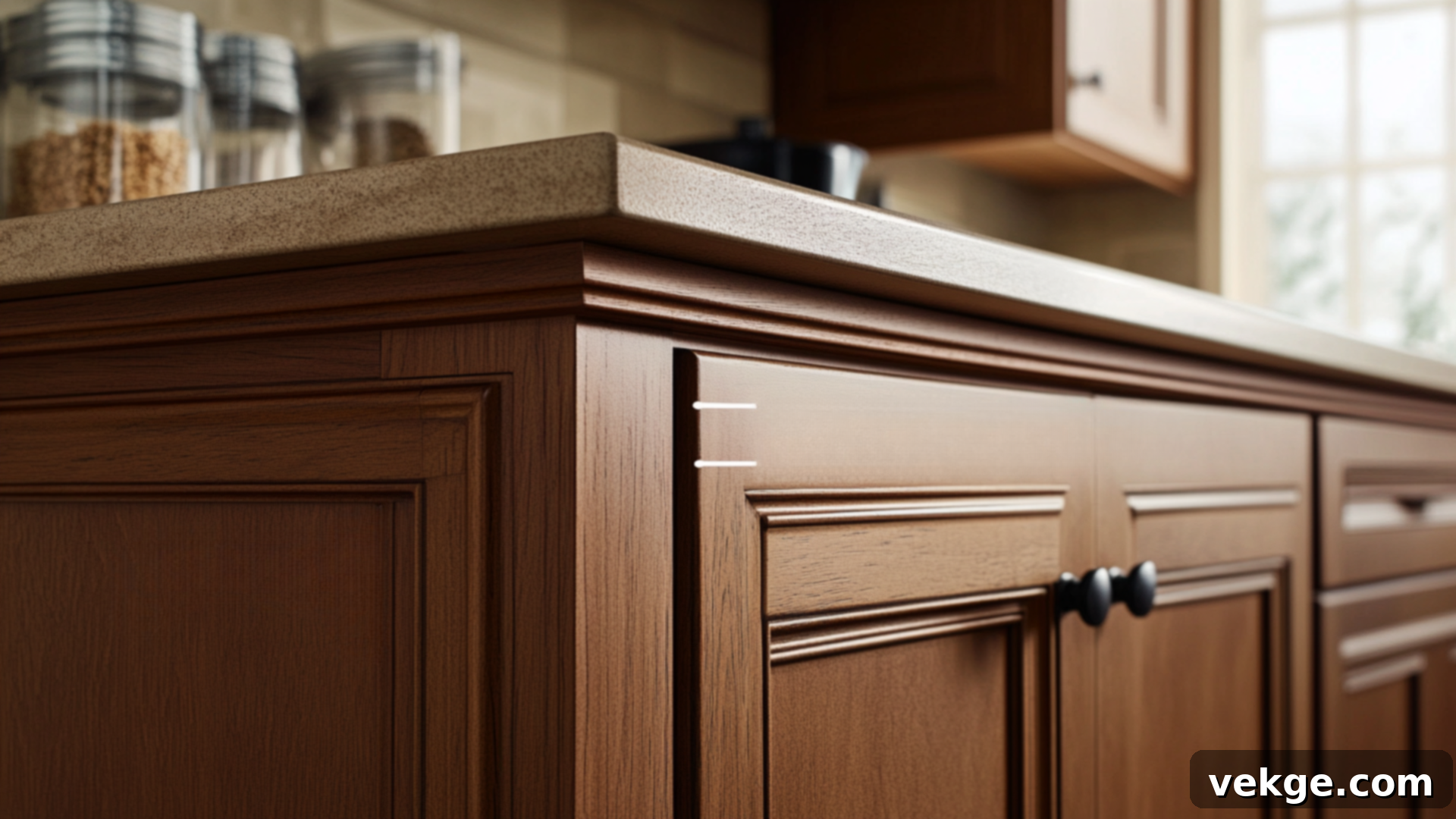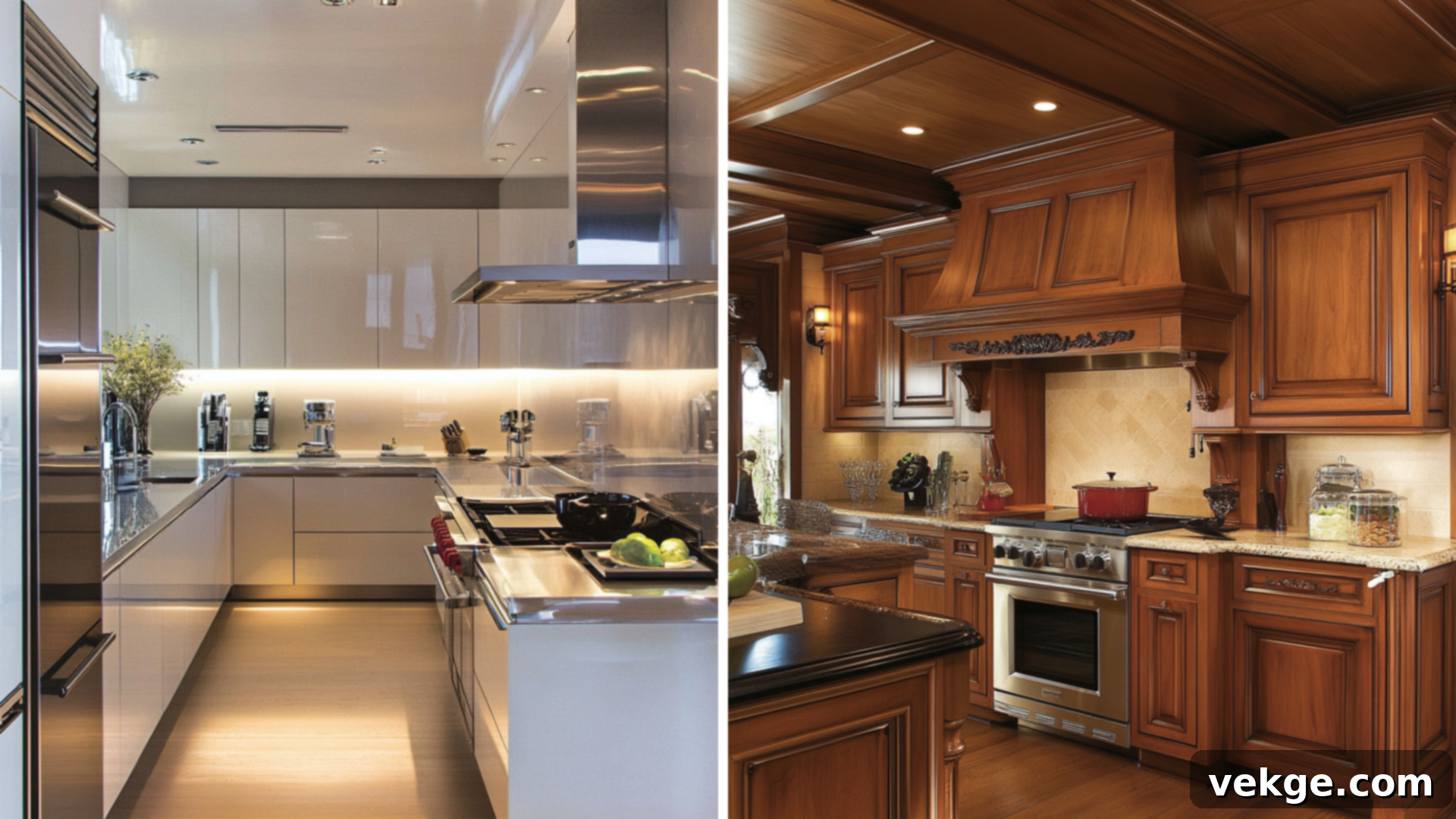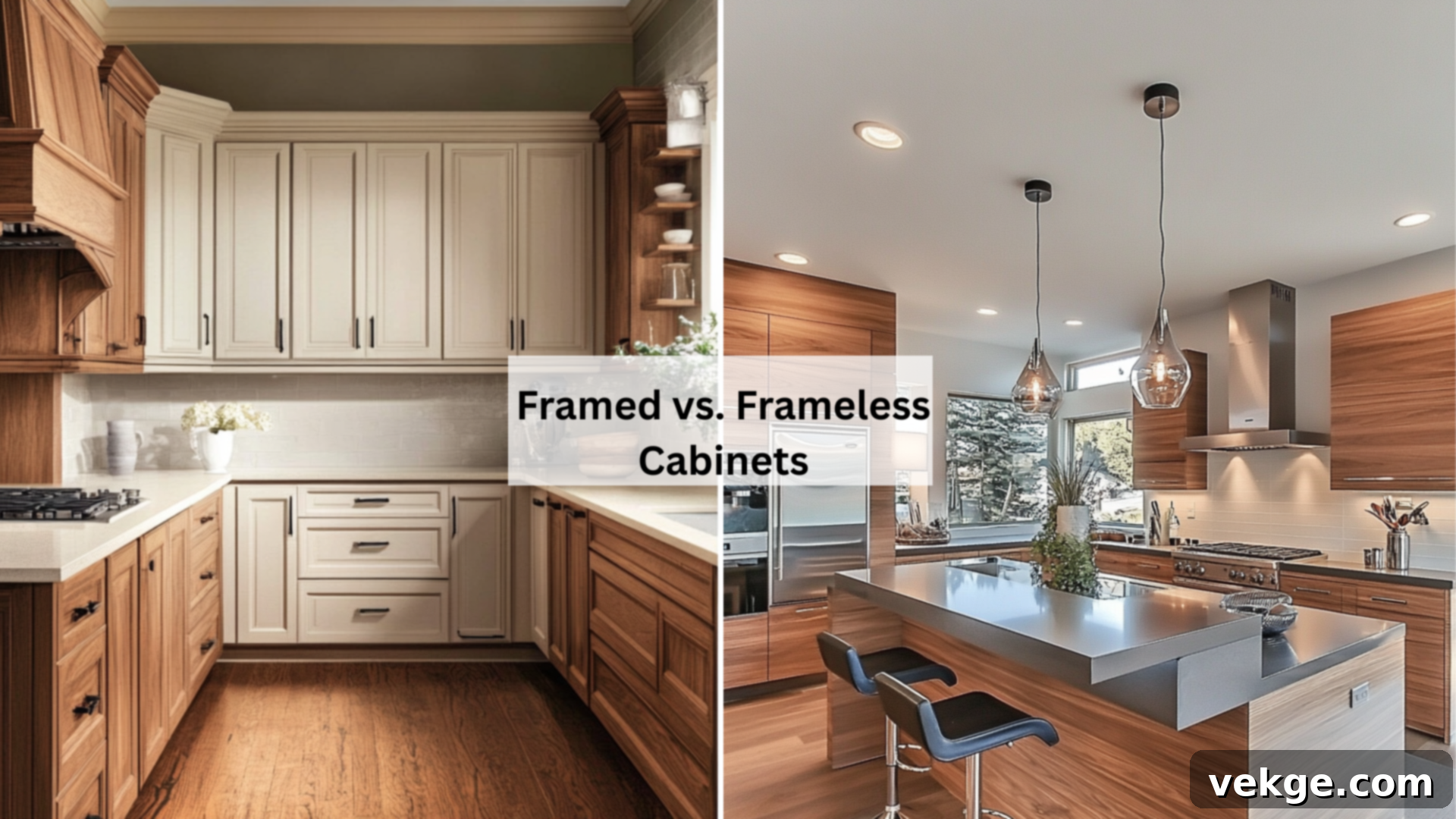Framed vs. Frameless Cabinets: The Ultimate Guide to Choosing Your Kitchen Style
Embarking on a kitchen renovation or simply upgrading your existing space often leads to one of the most significant decisions: choosing the right cabinets. The choice between frameless cabinets and framed cabinets can feel overwhelming, with many homeowners unsure of which style truly aligns with their aesthetic preferences, functional needs, and budget. This comprehensive guide aims to demystify the differences, helping you navigate the options with clarity and confidence.
This article will dissect the unique characteristics of each cabinet type, from their fundamental construction and the storage capacity they offer to their visual impact and maintenance requirements. We’ll explore the pros and cons of both styles, presenting the information in clear, actionable terms so you can make an informed decision.
By the end of this deep dive, you’ll be equipped with the knowledge to determine which cabinet style is best suited for your kitchen’s dimensions, complements your home’s architectural character, respects your financial plan, and enhances your daily culinary routines. Let’s eliminate the confusion and discover the ideal cabinet solution for your dream kitchen!
Understanding the Foundations: Frameless vs. Framed Cabinet Construction
Before diving into the benefits and drawbacks, it’s essential to grasp the core structural differences that define frameless and framed cabinets. This foundational understanding will illuminate why each style performs and appears distinctly.
Frameless Cabinets: The Sleek European Approach

Originating from European design principles, frameless cabinets represent a modern and minimalist aesthetic. Their construction is straightforward: they consist of a simple, robust box, typically made from plywood or particleboard, with no additional wooden frame attached to its front edge. Instead, the cabinet doors and drawer fronts are directly affixed to the sides of the cabinet box.
This design creates a remarkably smooth, flush, and uninterrupted facade when all doors and drawers are closed, often referred to as “full overlay” cabinetry. The hinges are concealed within the cabinet box, contributing to the clean, streamlined appearance. A key benefit of this design is the absence of any obstruction at the opening, granting what’s often called “full access” to the interior space. This maximizes usable storage volume, making every inch count.
Frameless cabinets are the hallmark of contemporary, modern, and minimalist kitchen designs. Their crisp lines and seamless surfaces lend themselves beautifully to sleek hardware, flat panel doors (also known as slab doors), and integrated appliances, fostering an uncluttered and expansive feel.
Framed Cabinets: The Enduring American Tradition

Framed cabinets, deeply rooted in American craftsmanship, represent a more traditional construction method. The defining feature of this style is a sturdy hardwood frame, typically 1-1/2 inches wide, attached to the front face of the cabinet box. This frame serves as the foundational structure, much like a picture frame surrounds an artwork, providing rigidity and stability.
The doors and drawer fronts are then mounted directly to this face frame. Depending on the specific design, doors can be “full overlay,” where they almost entirely cover the frame; “partial overlay,” where a portion of the frame is visible around each door; or “inset,” where the door sits flush within the frame opening, creating a truly classic, furniture-like appearance. With partial and inset designs, parts of this frame are visible even when the doors are closed, creating distinct lines and borders that define the cabinet’s structure.
This traditional style has graced American homes for generations, lending kitchens and bathrooms a timeless, robust, and classic feel. Framed cabinets are exceptionally versatile, complementing a wide range of aesthetics from rustic farmhouse to elegant traditional and even transitional styles.
Key Differences: A Side-by-Side Comparison of Framed vs. Frameless Cabinets
Understanding the fundamental construction allows us to delve deeper into the practical distinctions that will influence your decision. The following table and expanded explanations highlight how these two styles compare across critical aspects.
| Feature | Framed Cabinets | Frameless Cabinets |
|---|---|---|
| Storage Capacity | Framed units inherently offer slightly less internal storage space. The presence of the face frame, which acts as a lip around the opening, reduces the overall usable width and height, often by about 1 to 1.5 inches per opening. | Frameless units maximize interior storage. Without a face frame, there’s no obstruction at the cabinet opening, providing true “full access” and potentially 10-15% more usable space inside. |
| Accessibility | The face frame can sometimes make it a bit more challenging to maneuver larger items, such as wide serving platters, bulky blenders, or specific pots and pans, in and out of the cabinet opening. | The unobstructed opening of frameless cabinets allows for effortless loading and unloading of items, especially larger appliances or cookware, enhancing overall accessibility and ease of use. |
| Aesthetic Appeal | The visible frame lines and borders create a more defined, classic, and often more ornate look, especially with partial overlay or inset door styles. This contributes to a sense of traditional craftsmanship. | The clean, continuous lines and seamless facade of frameless cabinets exude a modern, minimalist, and streamlined aesthetic. This creates a cohesive, often expansive, visual effect across the kitchen. |
| Installation Ease | The rigid face frame adds inherent structural integrity, making framed cabinets generally more forgiving during installation. They are easier to square up and level, and the frame can help conceal minor wall imperfections. | Requiring precise measurements and careful leveling, frameless cabinets demand more meticulous installation. Without a frame to hide inconsistencies, even slight misalignments can be visually apparent in the uniform lines. |
| Durability & Strength | The solid wood face frame contributes significant structural strength and rigidity, helping the cabinet box maintain its square shape over time. This makes them robust and long-lasting, often able to withstand more wear and tear. | While strong, frameless cabinets rely entirely on the thickness and quality of the box construction (sides, top, bottom). They often require thicker material and more sophisticated joinery to compensate for the absence of a face frame’s inherent strength. |
| Cost Implications | Generally, framed cabinets can be more cost-effective. The frame adds inherent strength, sometimes allowing manufacturers to use slightly less expensive materials for the cabinet box itself without compromising overall integrity. | Typically, frameless cabinets command a higher price point. The need for thicker, higher-quality materials (e.g., premium plywood) for the box to ensure stability, coupled with more precise manufacturing, often results in increased costs. |
| Door Style Versatility | Framed cabinets accommodate the widest array of door styles, including full overlay, partial overlay, and the elegant inset style, which perfectly fits within the frame opening for a bespoke, furniture-like look. | Frameless cabinets are almost exclusively designed for full overlay doors. While they can support various door panel designs (slab, shaker, etc.), the overlay style is critical to achieving their characteristic seamless appearance. |
Which Cabinet Style Reigns Supreme for Your Kitchen?

Choosing between framed and frameless cabinets isn’t about one being inherently “better” than the other; it’s about identifying which style is superior for your specific kitchen, lifestyle, and design aspirations. Let’s delve into the crucial factors that will guide your decision.
Evaluate Your Kitchen Size and Layout
The physical dimensions and layout of your kitchen play a pivotal role in cabinet selection.
- Small Kitchens or Compact Spaces: In kitchens where every square inch is precious—think galley kitchens, apartments, or cozy eat-in areas—frameless cabinets are often the optimal choice. Their “full access” design provides an average of 10-15% more usable interior storage compared to framed options. This means you can store more items, and larger items fit with greater ease. Furthermore, the clean, uninterrupted lines of frameless cabinetry can visually expand a tight space, making it feel less cluttered and more open.
- Large Kitchens or Open-Concept Layouts: For spacious kitchens, expansive open-concept living areas, or those featuring large islands, both cabinet styles can work beautifully. Framed cabinets, with their visible frame lines and potential for intricate door styles (like raised panel or inset), can help to visually break up large stretches of cabinetry, adding architectural detail and a sense of structure. This can prevent a vast kitchen from feeling too stark or overwhelming. However, if your large kitchen demands maximum storage for an extensive collection of cookware, pantry items, or small appliances, the superior internal volume of frameless cabinets might still be a compelling advantage.
- Specific Layouts (e.g., L-Shape, U-Shape): Consider how corner cabinets and specialized units integrate. Frameless cabinets, with their unobstructed openings, can be particularly effective for corner solutions that utilize pull-out systems or lazy Susans, ensuring easy access to every item.
Harmonize with Your Design Preferences and Home’s Aesthetic
Your chosen cabinet style will largely dictate the overall ambiance and visual identity of your kitchen. It’s crucial that the cabinets resonate with your personal taste and the architectural style of your home.
- Modern, Contemporary, & Minimalist Homes: Frameless cabinets are the quintessential choice for these aesthetics. Their sleek, unadorned surfaces, clean lines, and absence of visible frames perfectly complement minimalist hardware (or no hardware at all with touch-latch systems), flat panel (slab) doors, and open, airy floor plans. They create a sophisticated, uncluttered, and highly contemporary look that prioritizes seamless functionality and visual simplicity.
- Traditional, Classic, & Transitional Homes: Framed cabinets excel in bringing warmth, character, and a sense of timelessness to these spaces. They pair wonderfully with intricate details such as crown molding, corbels, and decorative hardware. The visible frame allows for various door styles—from the elegant raised panel to the classic shaker or the luxurious inset style—each adding depth and craftsmanship. For a home that values heritage and a cozy, inviting atmosphere, framed cabinets are an ideal fit. Transitional designs often blend elements, and framed cabinets with clean-lined shaker doors can bridge the gap between classic and modern beautifully.
- Farmhouse & Rustic Styles: Framed cabinets, particularly those with shaker or beaded inset doors and rustic finishes, are highly compatible with farmhouse and rustic aesthetics, emphasizing craftsmanship and a lived-in feel.
Align with Your Budget and Long-Term Value
Financial considerations are paramount in any home improvement project. Understanding the cost implications for both initial outlay and long-term value is key.
- Initial Cost: Generally, framed cabinets can be more budget-friendly on the initial purchase. The inherent structural support provided by the face frame sometimes allows manufacturers to use less expensive materials for the cabinet box (e.g., furniture-grade particleboard) without sacrificing overall durability. However, this is not a hard-and-fast rule, as the cost ultimately depends on the material quality, wood species, finish, and complexity of the door style. Inset framed cabinets, for instance, are often among the most expensive due to the precision required in their craftsmanship.
- Frameless Cabinet Pricing: Frameless cabinets typically fall into a mid-to-high price range. Their box construction must be exceptionally robust, often requiring thicker, higher-grade plywood or dense furniture board to ensure stability and prevent sagging without the reinforcing face frame. The precision manufacturing also contributes to a higher cost.
- Long-Term Value and Resale: While frameless cabinets might have a higher upfront cost, their superior storage capacity can offer better long-term value, especially if maximizing space is critical. Their modern aesthetic can also be a strong selling point in contemporary real estate markets. Framed cabinets, being a timeless choice, maintain strong appeal and can also contribute significantly to resale value, especially in traditional homes.
Consider Functionality, Accessibility, and Lifestyle
Think beyond aesthetics to how your cabinets will perform in your daily life. Your cooking habits, household dynamics, and personal needs are vital.
- Storage of Large Items: If you frequently use bulky kitchen appliances such as stand mixers, food processors, large slow cookers, or oversized serving platters, frameless cabinets are a dream come true. Their unobstructed openings eliminate the hassle of maneuvering items around a frame, making storage and retrieval effortless.
- Everyday Cooking & Accessibility: For avid cooks who need quick and easy access to ingredients and tools, the full access of frameless cabinets can enhance efficiency. Families with young children might appreciate the added robustness and forgiving nature of framed cabinets, which can withstand more bumps and jostles.
- Mobility and Ergonomics: Individuals with mobility challenges or those seeking optimal ergonomics might find frameless options more user-friendly. The absence of a frame reduces the need to stretch or reach around an obstruction, making items on lower shelves or in deep drawers more accessible.
- Drawer Systems and Pull-Outs: Both cabinet types support modern drawer systems, pull-out pantries, and organizational inserts. However, frameless cabinets offer a slight advantage in that these accessories can be wider, making full use of the internal cabinet dimension.
Evaluate Installation Considerations
The installation process can vary significantly between the two styles, impacting both cost and potential DIY feasibility.
- Framed Cabinet Installation: Thanks to their rigid face frame, framed cabinets are generally more forgiving during installation. The frame provides inherent strength and makes squaring units easier. Small inconsistencies in wall flatness or slight gaps between cabinets can often be concealed by the frame, making them a more approachable option for experienced DIY enthusiasts, particularly in older homes with less-than-perfect walls.
- Frameless Cabinet Installation: Frameless cabinets demand a higher level of precision. Without a face frame to hide imperfections, every measurement must be exact, and the cabinets must be perfectly level and plumb to ensure doors align flawlessly and maintain their sleek appearance. This often necessitates professional installation by experienced cabinetmakers or installers who are proficient with this style, which can add to the overall project cost. Any unevenness in the walls may require shimming and careful adjustments.
- Lead Times: While not a direct feature of framed vs. frameless, manufacturing processes can sometimes lead to different lead times. Discuss this with your supplier, especially if your project has tight deadlines.
Essential Tips for Installing and Maintaining Your Cabinets
Regardless of the style you choose, proper installation and diligent maintenance are crucial for extending the life and preserving the beauty of your kitchen cabinets. These practical tips can save you time, money, and headaches over the years.
- Thorough Wall Preparation: Before any cabinets are hung, ensure your walls are properly prepared. This involves patching any holes, sanding rough patches, and ensuring the walls are plumb and square. Painting or sealing the walls behind the cabinets can also help prevent moisture damage and make future repairs easier.
- Invest in Quality Hardware: Your cabinet hardware—hinges, drawer slides, and handles—are the workhorses of your kitchen. Opt for high-quality, durable hardware that can withstand daily use and the weight of your doors and drawers. Cheap hardware can quickly fail, leading to misaligned doors, sagging drawers, and frustration. For frameless cabinets, ensure hinges are specifically designed for full overlay doors and offer multi-directional adjustability.
- Plan for Future Access: When designing your kitchen, consider how you will access plumbing, electrical connections, and appliance hook-ups for future maintenance or repairs. Strategically placed access panels or careful cabinet placement can save significant hassle down the line.
- Regular Cleaning and Care:
- For Framed Cabinets (Wood Finishes): Use a soft, damp cloth with a mild, pH-neutral soap (like dish soap diluted in water). Always wipe in the direction of the wood grain to avoid scratching and ensure an even clean. Immediately dry the surfaces with a clean, soft cloth to prevent water spots or moisture absorption, especially important for wood.
- For Frameless Cabinets (Laminate, Thermofoil, or Painted Finishes): These surfaces are often easier to clean. Wipe spills promptly with a soft, damp cloth and mild cleaner. Avoid abrasive cleaners, harsh chemicals, or scouring pads, as these can damage the finish. For high-gloss finishes, use a microfiber cloth to prevent streaks.
- Adjust and Maintain Hinges & Drawers: Over time, cabinet doors and drawers may go out of alignment due to frequent use or minor shifts in the house structure. Learn how to adjust your hinges and drawer glides (most modern hardware offers multi-way adjustment screws). This simple task can significantly prolong the life of your cabinets and keep them looking pristine. For frameless cabinets, precise hinge adjustment is particularly important to maintain their seamless appearance.
- Minor Repairs: For framed wooden cabinets, small scratches or nicks can often be touched up with wood repair markers or furniture wax sticks that match your cabinet’s stain or paint color. For frameless cabinets, especially those with laminate or thermofoil finishes, focus on preventing damage. If damage occurs, consult the manufacturer for recommended repair kits or professional advice, as these finishes can be harder to blend seamlessly.
Wrapping Up Your Cabinet Decision
You now possess a comprehensive understanding of the intricate details distinguishing frameless from framed cabinets. Both styles bring unique advantages to the table, and the “best” choice is ultimately the one that perfectly aligns with your personal needs, aesthetic vision, and practical considerations.
As you move closer to making your final selection, reflect on what truly matters most to you: Is it maximizing every possible inch of storage space, achieving a specific modern or traditional look, adhering strictly to a budget, or prioritizing ease of access for your daily routines? We strongly recommend visiting local kitchen showrooms. There, you can physically interact with both cabinet types – open and close doors, pull out drawers, examine the interior capacity, and visualize how they might integrate into your home.
Take photographs of your current kitchen space to help compare and contrast samples in the showroom. You might even ask for small door samples to bring home, allowing you to observe them under your kitchen’s specific lighting conditions and against your existing decor. The right cabinets are a significant investment that will not only enhance the beauty and functionality of your kitchen but will also serve as the heart of your home for many years to come.
